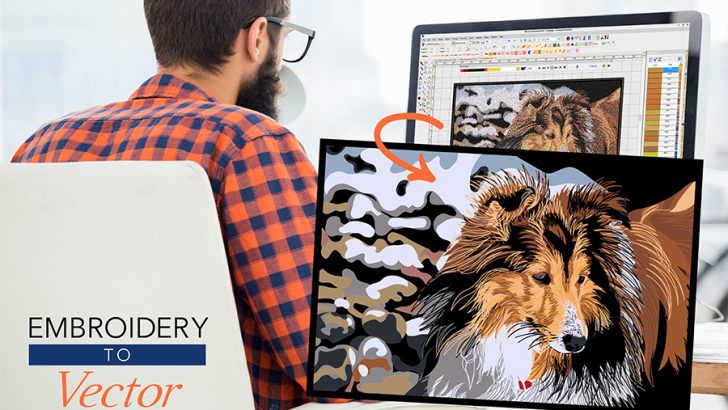Convert Vector Art to Embroidery: A Complete Guide for Designers and Crafters
Vector art has become a cornerstone of modern design, offering scalability and precision that traditional raster graphics can’t match. For designers and crafters looking to bring their digital creations into the physical world through embroidery, converting vector art into an embroidery format is both an art and a science. This guide will walk you through the process, from understanding the basics of vector files to selecting the right software and preparing your design for stitching. Whether you’re a seasoned designer or just starting out, this comprehensive overview will help you navigate the nuances of transforming vector art into beautiful, intricate embroidery.
Understanding Vector Art and Its Role in Embroidery
Vector art is created using mathematical equations to define shapes, lines, and curves, allowing it to scale without losing quality. Common file formats include SVG (Scalable Vector Graphics), AI (Adobe Illustrator), and EPS (Encapsulated PostScript). These formats are ideal for embroidery because they provide clear, sharp outlines that can be easily translated into stitch patterns. However, not all vector art is suitable for embroidery without modification. The complexity of the design, the number of colors, and the density of lines all play a role in how well a vector artwork translates into a stitched piece.
One of the first steps in preparing vector art for embroidery is simplifying the design. While vector files can contain intricate details, embroidery machines require designs that can be broken down into individual stitches. This means that overly complex elements, such as fine lines or small text, may need to be adjusted or removed to ensure the final product is both visually appealing and technically feasible. Additionally, the use of gradients or multi-colored areas in vector art must be converted into solid color blocks, as embroidery machines typically work with one color at a time.
Choosing the Right Software for Conversion
Selecting the appropriate software is crucial when converting vector art to embroidery. Several programs specialize in this task, offering tools to simplify, optimize, and convert designs. Some of the most popular options include:
- Embird – A powerful embroidery software that supports a wide range of file formats and offers advanced features like color separation and stitch editing.
- Wilcom – Known for its precision and versatility, Wilcom is widely used by professionals and hobbyists alike. It allows users to manipulate vector art and convert it into detailed embroidery patterns.
- Inkscape – A free, open-source vector graphic editor that can export designs in formats compatible with embroidery software. While it lacks some of the specialized tools found in dedicated embroidery programs, it’s a great option for basic conversions.
Each software has its own learning curve, so it’s important to choose one that aligns with your skill level and project requirements. Many programs also offer tutorials and community support to help users get started.
Preparing Your Design for Embroidery
Once you’ve selected your software, the next step is to prepare your vector art for conversion. This involves several key considerations:
- Simplify the Design: Remove unnecessary details, merge overlapping elements, and ensure that the design is clean and cohesive.
- Adjust Line Thickness: Embroidery machines work best with consistent line thickness. Thick lines may cause the machine to skip stitches, while thin lines may not hold up during the stitching process.
- Optimize Color Usage: Limit the number of colors used in the design. Each color change requires the machine to stop and switch threads, which can affect the overall quality and speed of the embroidery.
- Test the Design: Before sending your design to the machine, create a test sample to check for any issues. This can save time and prevent errors during the final stitching process.
Selecting the Right Thread and Fabric
The success of your embroidery project depends not only on the design but also on the materials used. Choosing the right thread and fabric is essential to achieving the desired look and durability. For example, polyester threads are commonly used for their strength and resistance to fading, while rayon threads offer a glossy finish that works well with vibrant colors. Similarly, the type of fabric you choose should complement the design—cotton is ideal for simple, clean designs, while denim or leather may require more specialized techniques.
Final Tips for Success
Converting vector art to embroidery requires attention to detail and a willingness to experiment. Here are a few additional tips to keep in mind:
- Use High-Quality Vector Files: Ensure that your original vector art is clean and well-structured. Poorly designed files can lead to errors during the conversion process.
- Consult with an Embroidery Professional: If you’re unsure about the feasibility of a design, consult with an experienced embroiderer. They can offer valuable insights and help you avoid common pitfalls.
- Stay Updated with Technology: Embroidery software and machines continue to evolve, so staying informed about the latest tools and techniques can help you achieve better results.
By following these steps and leveraging the right tools, designers and crafters can successfully transform their vector art into stunning embroidered pieces. Whether you’re creating custom apparel, home decor, or artistic displays, the process of converting vector art to embroidery opens up a world of creative possibilities. With practice and patience, you’ll be able to bring your digital designs to life in a way that’s both functional and beautiful.
